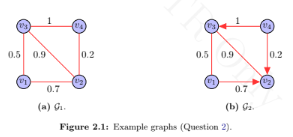In the deadlock detection algorithm employing the technique of graph reductions, show that the order of the graph reductions does not matter, the same final state will result. [Hint: No matter what the order, after each reduction, the available resource pool increases.]
What will be an ideal response?
Suppose there is an array, FREE, such that FREE i indicates the number of free resources of type i. When a process is reduced, it frees all of its allocated resources and removes all of its request edges. Removing a request edge does not affect the FREE array. However, freeing an allocated resource of type i increases FREE I by 1. Therefore, a series of reductions can never decrease any element of FREE.
You might also like to view...
Which of the following statements is false?
a) A finally block, if there is one, is placed after the last catch block. b) A finally block should release all resources acquired in the corresponding try block. c) The finally block and try block can appear in any order. d) A finally block is optional.
Find the adjacency matrix of the graph corresponding to the K ?onigsberg bridge problem.

A tab is a horizontal position within a line where text is aligned.
Answer the following statement true (T) or false (F)
The CSS Layout Property called ____ specifies that an element should float to the right or left outside the normal flow of elements.
A. Margins B. Float C. Flow D. Alignment